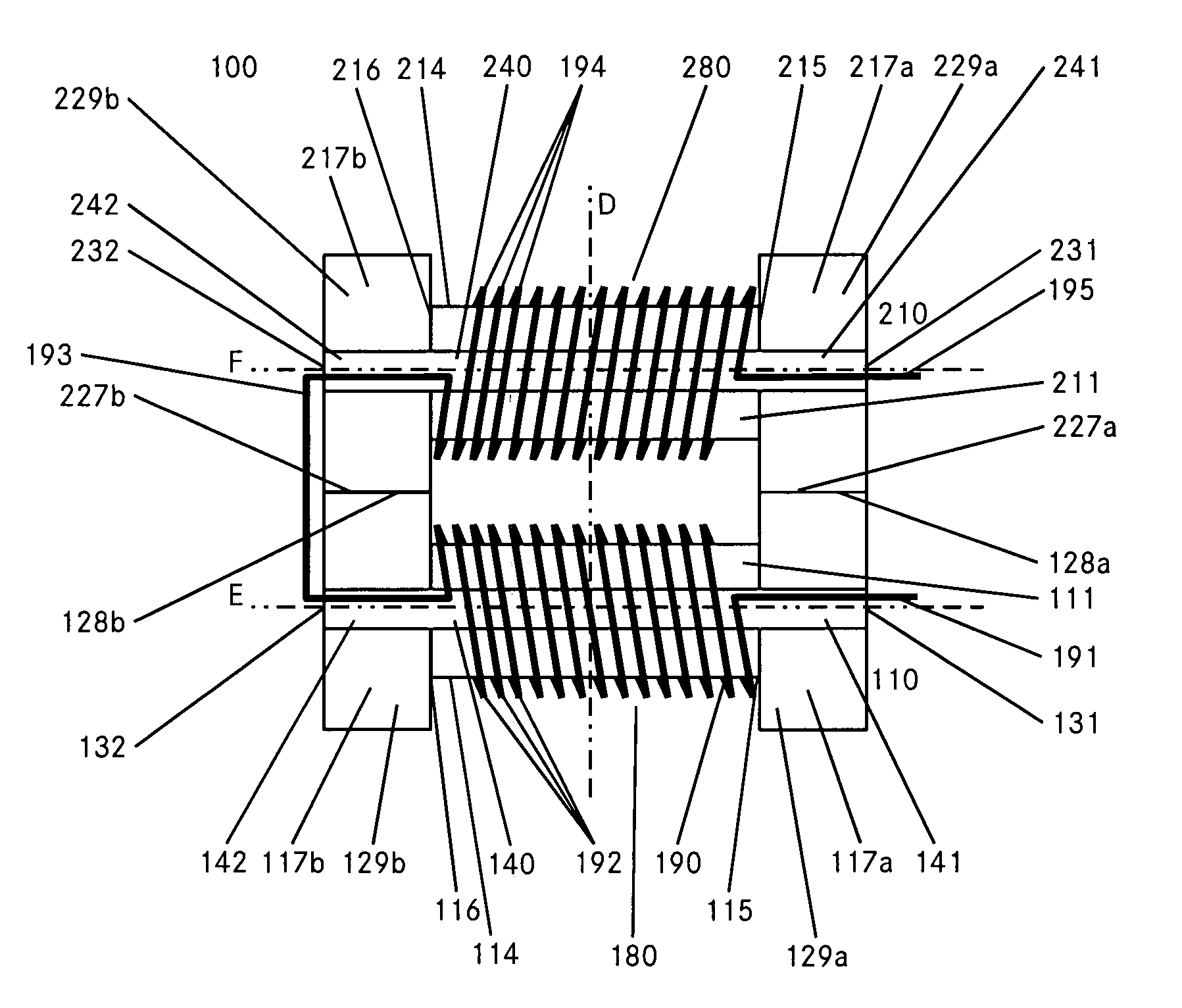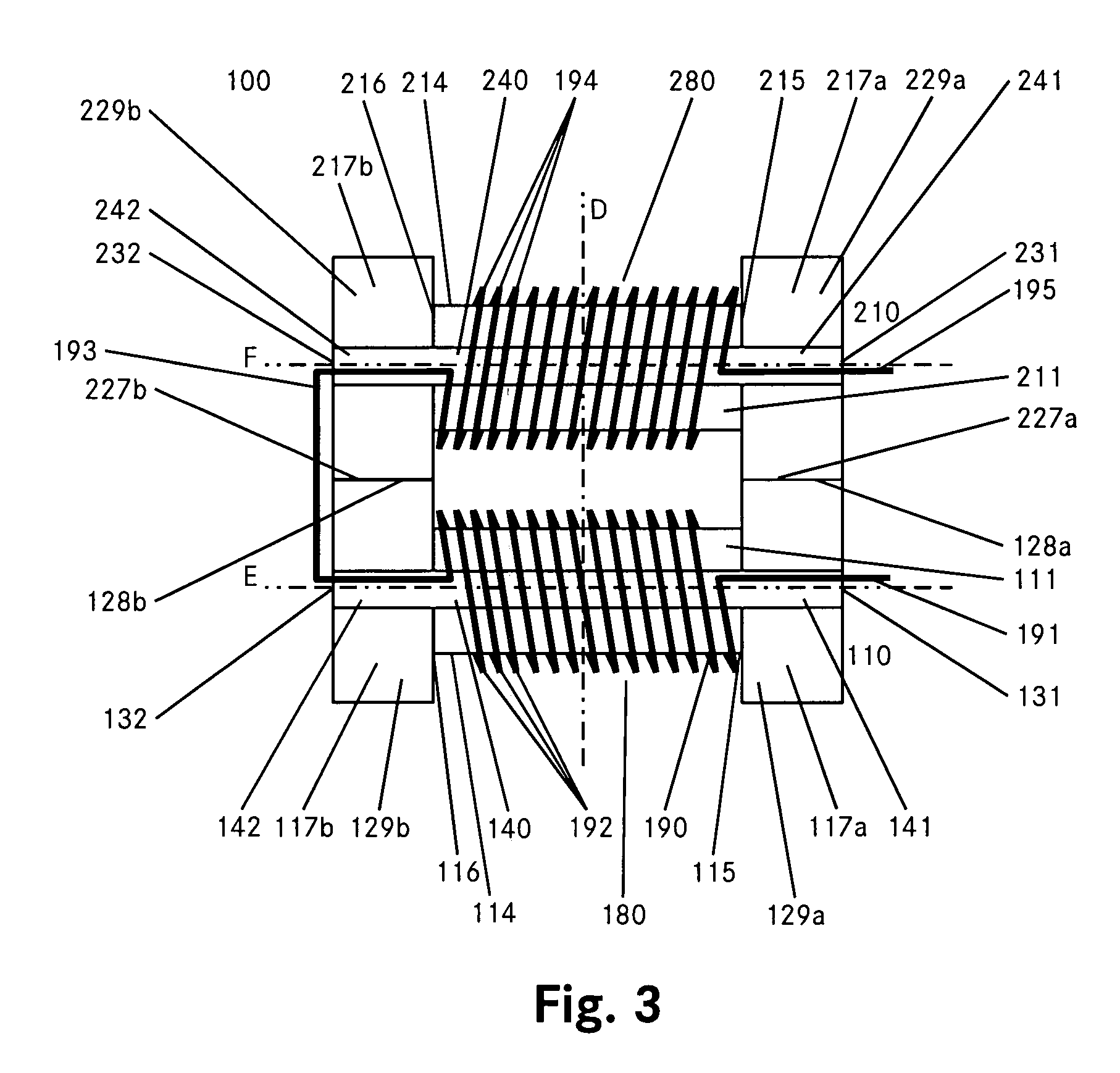Inductive element
a technology of inductive elements and winding windows, which is applied in the direction of inductances, electromagnets, cores/yokes, etc., can solve the problems of less than ideal copper fill factor, bobbin vibration, and particularly disadvantageous winding windows of bobbins, so as to improve the reliability of the method of manufacture and good stability
- Summary
- Abstract
- Description
- Claims
- Application Information
AI Technical Summary
Benefits of technology
Problems solved by technology
Method used
Image
Examples
Embodiment Construction
[0062] The embodiment of FIGS. 1a and 1b show a plan view of a core-part 10 of an inductive element according to the invention from two different directions. FIG. 1a shows the view perpendicular to a longitudinal axis A of the core-part 10 and FIG. 1b shows a view along the axis A.
[0063] The core-part 10 comprises an elongated cylindrical center piece 11 with its longitudinal axis co-axially aligned with the axis A. The center piece 11 has a circular cross section 12 and, with respect to the axis A, an outer (superficies) surface 13 forming a winding surface 14. The center piece 11 has at each of its longitudinal ends 15 and 16 a contact element 17a and 17b, respectively. The core-part 10 is symmetrically formed with respect to a plane B which is perpendicular to the longitudinal axis A and goes through the longitudinal middle of the center piece 11. The contact elements 17a and 17b are also symmetrically arranged with respect to the plane B. In other embodiments not shown here, th...
PUM
| Property | Measurement | Unit |
|---|---|---|
| angle | aaaaa | aaaaa |
| angle | aaaaa | aaaaa |
| electrical conductor | aaaaa | aaaaa |
Abstract
Description
Claims
Application Information
 Login to View More
Login to View More - R&D
- Intellectual Property
- Life Sciences
- Materials
- Tech Scout
- Unparalleled Data Quality
- Higher Quality Content
- 60% Fewer Hallucinations
Browse by: Latest US Patents, China's latest patents, Technical Efficacy Thesaurus, Application Domain, Technology Topic, Popular Technical Reports.
© 2025 PatSnap. All rights reserved.Legal|Privacy policy|Modern Slavery Act Transparency Statement|Sitemap|About US| Contact US: help@patsnap.com



